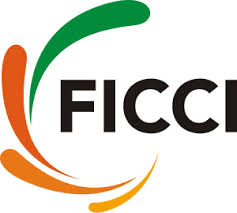 NEW DELHI, June 5, 2014. The Atomic Energy Regulatory Board (AERB) has initiated the process of e-licensing system, eLORA, to speed up the process of filing applications and grant of licenses and registration for the medical fraternity. This was stated here today by Dr. S.S. Bajaj, Chairman, AERB, at a FICCI conference on ‘Radiation Safety & Quality Assurance – Driving the Benefits of Innovation in Radio Diagnostics & Therapy’.
NEW DELHI, June 5, 2014. The Atomic Energy Regulatory Board (AERB) has initiated the process of e-licensing system, eLORA, to speed up the process of filing applications and grant of licenses and registration for the medical fraternity. This was stated here today by Dr. S.S. Bajaj, Chairman, AERB, at a FICCI conference on ‘Radiation Safety & Quality Assurance – Driving the Benefits of Innovation in Radio Diagnostics & Therapy’.
In his inaugural address, Dr. Bajaj noted that in India only a very small number of X-Ray facilities were registered with the AERB. This highlights the need for cooperation among all stakeholders to close the large gap. Also stringent enforcement of regulations was needed by the AERB to reduce radiation effects, he added. Dr. Bajaj congratulated FICCI for the efforts and organizing the programme. He encouraged FICCI to carry out the initiative in five other different locations of the country to bring awareness on the subject.
He said that the increase in diagnostic and thearupatic use of equipment using ionizing radiation called for further sensitization and awareness among all stakeholders towards radiation safety and towards AERB regulations. Such sensitization needs to cover manufacturers, suppliers and service providers of equipment, owners of equipment, government agencies, medical professional and patients.
Dr. Bajaj said that quality management was an all-encompassing paradigm which required maintenance of high standards of clinical practice, a combination of properly trained staff, equipment made with ‘Good Manufacturing Practices’ protocols and programmes for continuous sensitization by re-training.
He said it was important to understand the unique dimensions of healthcare in the country. Today equipment considered outdated co-existed with equipment using cutting edge technology. The users of latest technology should be well trained in safety measures provided by design so as to fully avail of the benefits of these high-tech systems, while the former should ensure periodic maintenance and frequent re-calibration for their safe use.
In his keynote address Dr. Ashok Seth, Chairman, Fortis Escorts Heart Institute, proposed that at the time of revamping medical curriculum, the medical council should include radiation as a substantial chapter starting from MBBS level. At present radiation safety and exposure is not covered in the curriculum which is now a critical part of medical science and understanding among the clinicians was low on the subject. He also urged the AERB to make the certification procedure easier and more robust.
Mr. R Bhattacharya, Secretary, AERB, said that AERB has been entrusted with the responsibility of enforcing radiation safety regulations. With respect to use of radiation in medical applications, AERB was more concerned on radiation safety and quality assurance aspects. Several stringent regulations are adhering to the relevant safety standards and requirements. The overall radiation safety is achieved by ‘Built-in Safety’ combined with ‘Transport Safety’ and ‘Operational Safety’.
In his welcome remarks, Dr. A Didar Singh, Secretary General, FICCI, said that the recommendations that had emerged from continuous consultative dialogue amongst industry and other stakeholders in this niche sector were enhancing the timely availability of imaging and therapy medical equipments to needy patients by streamlining the process of approvals and procedural formalities for hospitals; spreading awareness on radiation safety through training programmes and initiation of best practices at all levels and ensuring patient radiation dosage monitoring before repetitive scans in a short duration of time.
Mr. J Sunderrajan, Co-Chair, FICCI Medical Electronics Forum & Head-Strategic Sector Accounts & Business Development, Siemens Healthcare, delivered the vote of thanks.
Further, Dr. Nittin Parkhe, HOD, Radiology, St Stephens Delhi, mentioned that clinical guidelines should be defined where Ultrasound, MRI and CT scan can be used. To the extent possible CT scan should be avoided. General public, and particularly young ladies, should be aware of the hazards of repeated over exposure to CT scan.
